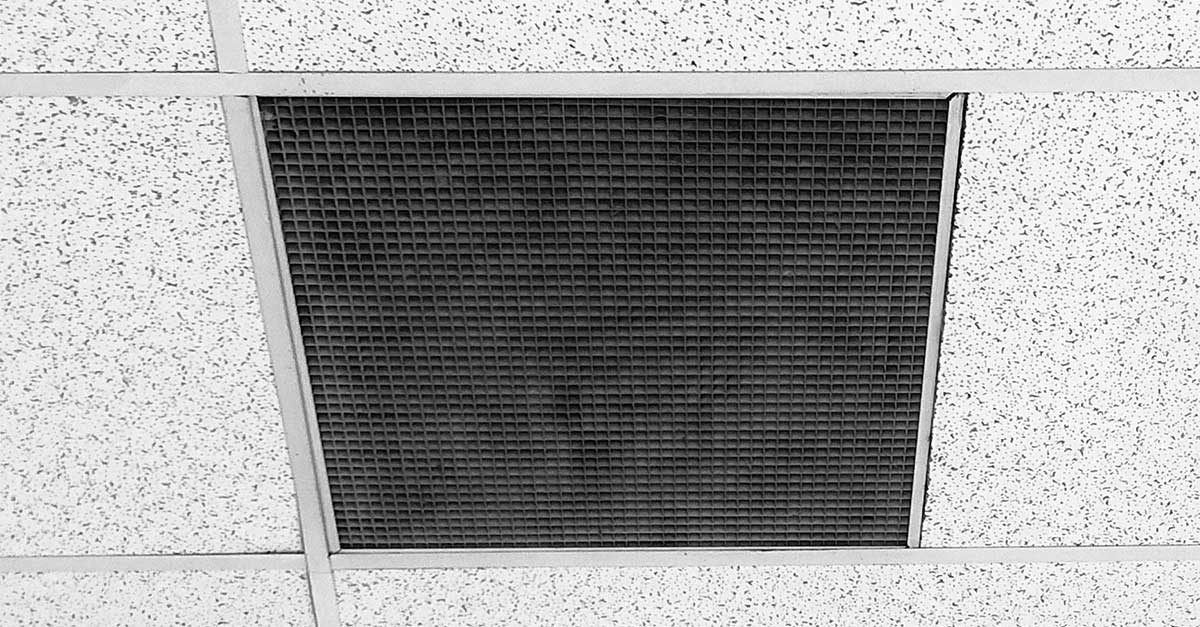Sitting in the conference room of a large health care facility with several department managers—including managers from infection control, surgery, the emergency department, and nursing departments, among others—we discussed the problem of health care-associated infections, or HAIs.
This acclaimed teaching hospital, though rated as one of the best with its tightly controlled cleaning schedules, was concerned about the recent increase in nosocomial infections (originating in the hospital) and the costs associated with them.
To help address its concerns, the hospital called upon the National Organization of Remediators and Mold Inspectors (NORMI) to assess its indoor environment. While it seemed the staff had performed a great job in following stringent surface-cleaning protocols, they had actually neglected the source of their current problems: the air they were breathing.
When I shared this information with the team, they were perplexed, and I could see it on their faces. After suggesting they simply look up at the air conditioning registers above their heads, can you guess what they discovered? To start, dirt and dust. Was there mold? How about dead skins cells? Was it pollen? Or other pollutants?
That’s what began the discussion when we showed them why it was so important to do a wholistic professional assessment of their indoor air quality (IAQ), which would include both air and surface testing.
Beyond the Surface
Health care facilities have long recognized the importance of surface cleaning to reduce the possibility of nosocomial infections. Great measures are taken to ensure regular cleaning, increased handwashing, and—when necessary—isolation of areas to reduce the possibility of cross-contamination. But who is thinking about the air? Look up and examine the supply register above your head. Do you see dirt? Mold? Other contaminants?
If you consider what is settling on your surfaces, you would realize that most, if not all, of it comes from the air. That’s where it starts. Pollen, mold spores, dead skin cells, dander, and dust mite feces, among other particles, are all traveling along on the air currents in our indoor environments. They get swept up by our air conditioning system and distributed throughout the facility, setting up the potential systemic contamination. Through the natural processes of ionization and ultraviolet radiation—produced by electronic equipment, sunlight, and air movement—the particulate lands on a surface and comprises the dust we are constantly wiping up.
Bacteria and viruses don’t have wings to fly around in the air, but they do ride on those dust particles. For example, when I sneeze, I may not hit you with the sneeze, but some of those germs stick to the submicron particles floating around in the air. You suck that down into your lungs, increasing your chance of catching whatever virus I’m carrying. If the germs lands on a surface, someone else will also pick it up through touch transmission as soon as they put their hands to their mouth or nose. It’s not so comforting to think about, but most of what we see on our surfaces comes from the air we breathe.
It’s important to include good air filtration and purification processes to keep those airborne contaminants from spreading throughout the environment. While surface-cleaning protocols deal effectively with touchpoints, IAQ management techniques deal with the contaminants before they land on the surface. It’s a proactive approach and more wholistic than simple surface cleaning.
The Importance of Wholistic Cleaning
According to industry watchdog organization Trust for America’s Health (HealthyAmericans.org), “It is estimated that 1 in 20 hospitalized patients will contract an HAI each year, culminating in approximately 1.7 million infections and 99,000 deaths each year. These infections are increasingly moving beyond traditional health care settings and into nursing homes and communities.”
Methicillin-resistant Staphylococcus aureus (MRSA) and Clostridium difficile (C. diff) are among the most urgent infections to treat during a hospital stay. MRSA typically presents itself as a skin infection that won’t heal and is accompanied with painful symptoms. Difficult to fight, MRSA usually requires multiple rounds of various antibiotics, if it can be controlled at all.
C. diff is a potentially fatal inflammation of the colon and is accompanied by symptoms such as watery diarrhea and fever. The bacterium is usually picked up from contaminated surfaces and is becoming all too common in health care and assisted-living facilities. Unfortunately, the statistics are often not published by each facility, so it is difficult to know which health care facilities have the best infection control procedures in place.
To help curb the spread of HAIs, health care facilities have now created entire departments that deal specifically with nosocomial infections. Because governmental agencies like Medicaid and Medicare have declined to reimburse patients or hospitals for HAIs, the burden has fallen on these facilities to implement extra precautions to reduce instances of these secondary infections. A wholistic cleaning strategy is one way to help tackle this burden.
The 3-Step Wholistic Cleaning Approach
Here are three steps to get started on implementing your own wholistic cleaning strategy:
Step No. 1: The wholistic approach starts with discovering what’s in the air and on surfaces. NORMI recommends a comprehensive IAQ/mold assessment, which includes air and surface samples for mold and bacteria, as well as microbial volatile organic compounds (mVOC). Mold, when actively growing, produces mVOCs. Even in environments with little or no visible mold, mVOC samples can detect mold growth.
Mold and bacteria are more easily analyzed through surface samples. While air samples may pick up mold spores, it is easy to get a false positive because air quality is so dynamic. That’s why a variety of samples and different kinds of samples are so important to incorporate into the process.
Step No. 2: Once a baseline has been created, a NORMI assessor can interpret the lab results within the context of his subjective and objective onsite evaluation to determine what needs to be done to improve the indoor environment. The NORMI Sanitization Protocol and ISSA recommend taking the contamination back to a zero baseline. Cleaning the environment by utilizing this approach will address both the air and surfaces to effectively and thoroughly clean the occupied space.
Step No. 3: This is the most important, but most often neglected, step in the process. Once post-testing has been performed to confirm contamination levels have been reduced, the management program will put products, services, and processes in place that will keep it clean and reduce the possibility of future contamination. The cleaning process should be like washing and waxing your car. You wash the car to remove the dirt, and then wax it to help keep it clean.
When your air conditioner runs, it is cooling the environment. When you turn it off, it no longer keeps the environment cool and the hot temperature comes back. It’s the same with controlling indoor air quality. With the IAQ management program in place, as long as the systems receive regular service and the maintenance schedule is faithfully followed, the improvement will continue and your facility will maintain a healthier indoor environment.
Reducing Infections
Nosocomial infections and HAIs can be reduced. With a comprehensive and wholistic approach, air and surfaces can be treated for contaminants, eliminating cross-contamination.
Don’t neglect the importance of considering the air that we breathe, because many of the airborne particles in the air are carrying the contaminants that can make people sick. If the occupants in your facility are reacting to something in the building, there’s a good chance they will feel better once you incorporate a wholistic cleaning strategy into your organization.
What can you do to begin this process? Simply look up. If you see what I often see, it may be time to address what’s coming out of those registers.




